
Венеција тоне: Моћно решење за будућност плутајућег
Венеција тоне: Откријте иновативне научне предложене начине за подизање тла, решење за спасавање Венеције и будућност овог плутајућег града.
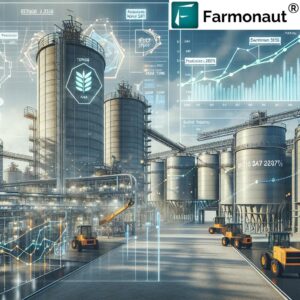
Düngemittel Hersteller Kassel: Quartalszahlen 2025 sichern Wachstum
Starke Produktionsleistung bei Düngemittel Hersteller Kassel: Landwirtschaft Quartal Zahlen, Absatzmenge in Tonnen und Prognose Kalimarkt Entwicklung.

40 млрд $ для устойчивого сельского хозяйства и продбезопасности Азии
Устойчивое сельское хозяйство и продовольственная безопасность в азии: инвестиции, инновации, защита биоразнообразия и модернизация агробизнеса.

白俄罗斯伏尔加格勒合作新篇章:伟大遗产引领共同未来
白俄罗斯 伏尔加格勒 合作,伟大的遗产 共同的未来,农业和客运设备供应,阿斯特拉罕州港口 货物转运,探索历史与贸易新趋势。
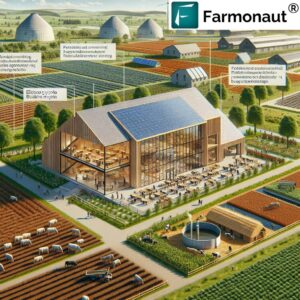
7 innovative Wege zur nachhaltigen Bioökonomie in Brandenburg
Nachhaltige Bioökonomie in Brandenburg: Innovationshof Groß Kreutz zeigt, wie Landwirtschaft, erneuerbare Energie und Wertschöpfung aus Rohstoffen gelingt.

Asia’s $40B Agriculture Funding Boosts Sustainable Food Security
Explore agriculture financing in Asia, sustainable development, and food security challenges. Discover impacts on jobs, climate, and biodiversity—read more.

Посевная кампания 2024 в Беларуси: итоговые площади и динамика
Посевная кампания 2024: аграрии республики завершили сев яровых культур, кукурузы, картофеля, овощей, используя минеральные удобрения и известкование.
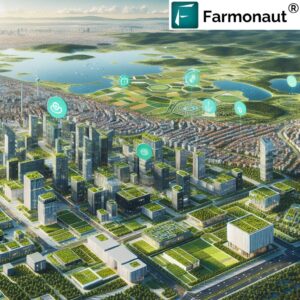
Türkiye Sağlıklı Kentler İçin 7 Güçlü Adım: Toprak ve Gıda
Türkiye’de belediyeler, sağlıklı kentler için toprak sağlığı izleme, gıda güvenliği ve sürdürülebilir çevre yönetimiyle sürdürülebilirliğe odaklanıyor.

Подготовка почвы для корнеплодов в Москве: 5 советов для урож
Узнайте, как обновлять почву на грядках, использовать удобрения для корнеплодов и соблюсти дистанцию при посадке семян весной в Москве.

Chemical Industry in Kazakhstan: 7 Key Trends Powering 2024 Growth
Kazakhstan’s chemical industry drives growth, boosting fertilizer production and meeting domestic demand; discover trends shaping agriculture and industry sectors.

Asia’s $40B Investment to Advance Sustainable Agriculture & Food Security
Explore food security in Asia, sustainable agriculture, and climate resilient systems driving nutrition security and biodiversity conservation. Read more.

5 Key Crop Insurance Insights for Rural Brazil by Farmonaut
Discover key trends in crop insurance, rural insurance in Brazil, and Farmonaut’s agtech solutions driving efficient, accessible coverage for farmers.
Rural Market Infrastructure Boost: N3.5B Oyo Upgrade Spurs Growth
Discover how rural market infrastructure in Oyo State is transforming agriculture with modern facilities, improved roads, and enhanced market access.

حصاد القمح في القليوبية: 30 فدان تدعم الإنتاجية المحلية
حصاد القمح في القليوبية يُبرز جهود الزراعة المستدامة، دعم المزارعين، وتوفير التقاوي عالية الجودة لتحسين الإنتاجية والمستوى المعيشي.

Coffee Farming in Othaya: 5 Proven Ways to Boost Family Returns
Explore coffee farming in Kenya, succession planning, and strategies to increase yields, engage youth, and enhance coffee plantation management and

5 Key Steps for Resilient African Agriculture and Food Systems
Explore Africa’s agricultural transformation as new strategies boost sustainable food systems, resilient agrifood systems, and economic growth—learn more.

Canada United States Trade: 7 Powerful Shifts Impacting Economies
Explore the evolving Canada United States trade, economic relationship, and impact of Canadian trade agreement on national economies and industry

Climate Research Platform: 7 Powerful Ways Montreal Safeguards Data
Discover how a climate research platform centralizes data, protects scientific reports, and supports sustainable development amid threats and censorship.

Graphene Concrete Solutions: 5 Powerful Ways Canada Cuts CO2
Discover the latest in sustainable construction as nanomaterials and graphene concrete solutions boost durability, reduce CO2, and advance eco-friendly trends.

How Federal Cuts Impact Bitterroot National Forest Jobs in Hamilton
Explore the economic impact of federal job cuts on Hamilton’s rural economy, forest service, labs, and the community’s future in

أسعار البقالة في كندا 2024: استقرار ملحوظ وتوقعات
تعرف على أحدث توقعات أسعار البقالة في كندا، وتأثير التضخم، وقيمة الدولار، وتغيّر العرض والطلب على السلع الغذائية في موسم

Quebec Agriculture: 5 Powerful Trends Shaping Education and Commerce
Explore Quebec agriculture, educational trends, international exhibitions, and government boards shaping the province of Canada’s agricultural future.

5 Key Agriculture Breakthroughs in Australia, Singapore, India Deals
Explore Australian, Singapore, India, and Angola agreements in agriculture, technology, and culture; discover global leaders and key industry trends now.

Canada United States Trade: 5 Powerful Implications for the Economy
Explore Canada United States trade, Canadian economic dependence, and free trade agreement impacts on markets, energy, industry trends, and national

Climate Research Database: 7 Powerful Ways Montreal Protects Data
Explore a centralized climate research database for open access to environmental data, scientific reports, and proactive protection of climate change

Federal Jobs in Montana: 7 Critical Impacts on Hamilton’s Economy
Explore how federal jobs in Montana, Bitterroot National Forest employment, and funding cuts reshape Hamilton’s economy and threaten rural community

أسعار البقالة في كندا 2024: استقرار ملحوظ وتوقعات
تعرّف على استقرار أسعار البقالة في كندا وسط تغييرات أسعار السلع الغذائية، تأثير العرض والطلب، وارتفاع الدولار الكندي بعد جائحة
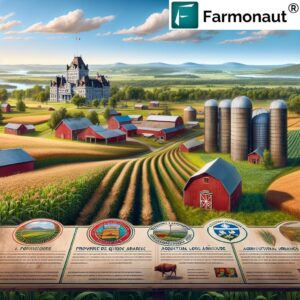
Quebec Agriculture: 7 Powerful Trends Shaping the Province
Explore Quebec agriculture, provincial agricultural boards, and Montreal chamber of commerce’s role in international exhibitions and French agricultural education.

Canada US Trade Relations: 5 Powerful Trends Shaping Ottawa’s Economy
Explore Canada US trade relations, economic dependence, energy exports, and impacts of tariffs on the Canadian economy. Discover key industry

6 Top Automotive Courses for Saskatchewan High School Students
Explore hands-on automotive courses for high school students, learn mechanical skills, and discover career options in Saskatchewan’s growing training programs.

Hamilton Montana Jobs Crisis: 7 Key Impacts on Local Economy
Discover how hamilton montana jobs and bitterroot national forest employment cuts threaten local economy, public safety, and main street businesses.

Canada’s Federal Plastics Registry: 7 Key Business Reporting Rules
Discover how new canadian environmental protection act rules transform plastic waste reporting requirements for businesses—learn how to stay compliant.

أسعار البقالة في كندا 2024: مؤشرات استقرار مذهلة وتوقع
أسعار البقالة في كندا تستقر رغم التضخم، بفضل ارتفاع الدولار وقوة العرض؛ تعرّف على توقعات أسعار السلع الغذائية وتأثير سلسلة
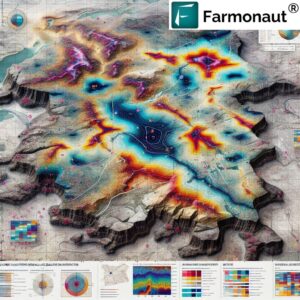
Athabasca Basin Uranium Exploration: 5 Powerful Geophysical Insights
Explore the latest in Athabasca Basin geophysical survey data integration, airborne magnetic and radiometric surveys, and uranium exploration in Saskatchewan.

Vietnam Canada Trade Opportunities: 2025 Market Trends & Growth
Explore Vietnam Canada trade opportunities, supply chain trends, and rising Vietnamese food exports. Discover insights on market growth and CPTPP

Agriculture in Quebec: 7 Powerful Trends Shaping Its Legacy
Explore the history of agriculture in Quebec, agricultural education, and Montreal chamber of commerce’s role in shaping Canada’s agricultural industry.

OECD Southeast Asia 2025: Boosting Trade, Agriculture & Investment
Explore OECD Southeast Asia Regional Programme, Thailand OECD membership, and Laos development in trade, infrastructure, agriculture, and investment.

Ukraine War Relief: 5 Powerful Ways Peoria Aids Turnopil Refugees
Ukraine war relief efforts bring construction, dental, and mental health aid to refugees in Turnopil—discover impactful projects helping displaced Ukrainians.

Hydrogen Fuel Cell Trucks Revolutionize Anaheim Logistics in 2025
Explore hydrogen fuel cell trucks, sustainable transportation solutions, and advanced powertrain technology shaping the future of zero-emission drayage fleets.

Cleveland Riverfront Park: 5 Powerful Changes Shaping Greenspace
Discover how Cleveland riverfront park and Irishtown Bend trail transform urban greenspace, protect riverbank soil, and boost access to metroparks

7 Growth Strategies for Commercial Banking Services in Sacramento
Discover leadership in commercial banking services, agribusiness lending, and small business loans plus strategies for growth in key markets and

PFAS Contamination in San Diego: 7 Urgent Actions for Clean Water
Explore the latest EPA actions tackling PFAS contamination in water, air, and soil, new testing strategies, and the human health
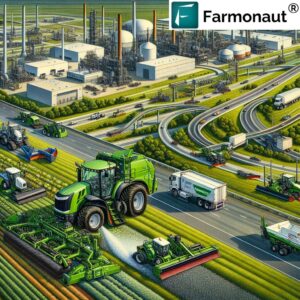
Seguin Vegetation Management Equipment: 2025 Market Insights & Trends
Explore key market updates on vegetation management equipment, tractor mowing, and infrastructure maintenance solutions across North America and beyond.

Civilian Conservation Corps: 7 Powerful Impacts on New York’s Parks
Discover how Civilian Conservation Corps camps drove New Deal conservation projects, planting trees and building public lands across New York’s

Florida Citrus Industry: 7 Powerful Ways Polk Farmers Battle Greening
Discover the future of citrus trees and orange groves in Florida—explore citrus farming challenges, greening disease, and sustainable agriculture practices.
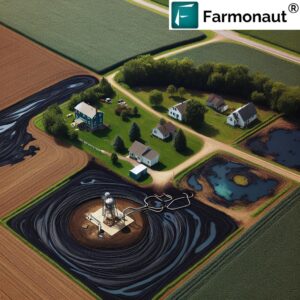
Biosolids Moratorium in Voorheesville: 5 Urgent Health Risks Uncovered
Biosolids moratorium debated as biosolids contamination threatens well water; explore health risks, forever chemicals, and statewide advocacy efforts.
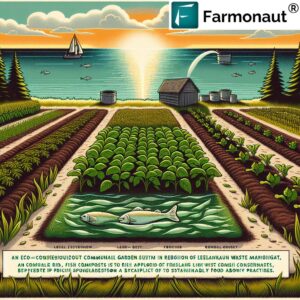
Fish Waste Fertilizer: Transforming Leelanau’s Sustainability in 2022
Discover how sustainable fish waste management and tribal traditional farming methods enhance Great Lakes fishery sustainability and eco-friendly farming.

Arkansas Farm Family of the Year: 5 Inspiring Community Leaders
Discover how Arkansas farm families lead in sustainable agriculture, community development, and conservation of natural resources. Read more for insights!

Azalea Festival: 7 Key Tips for Vibrant Blooms in Washington
Discover azalea varieties, best soil for azaleas, planting tips, sunlight needs, and how to boost blooms from spring to fall
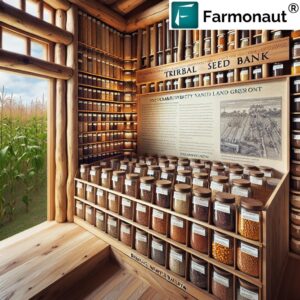
5 Effective Native Seed Preservation Methods in Bismarck Communities
Discover how tribal seed banks and native seed preservation empower sustainable agriculture, protect culture, and open pathways for future generations.